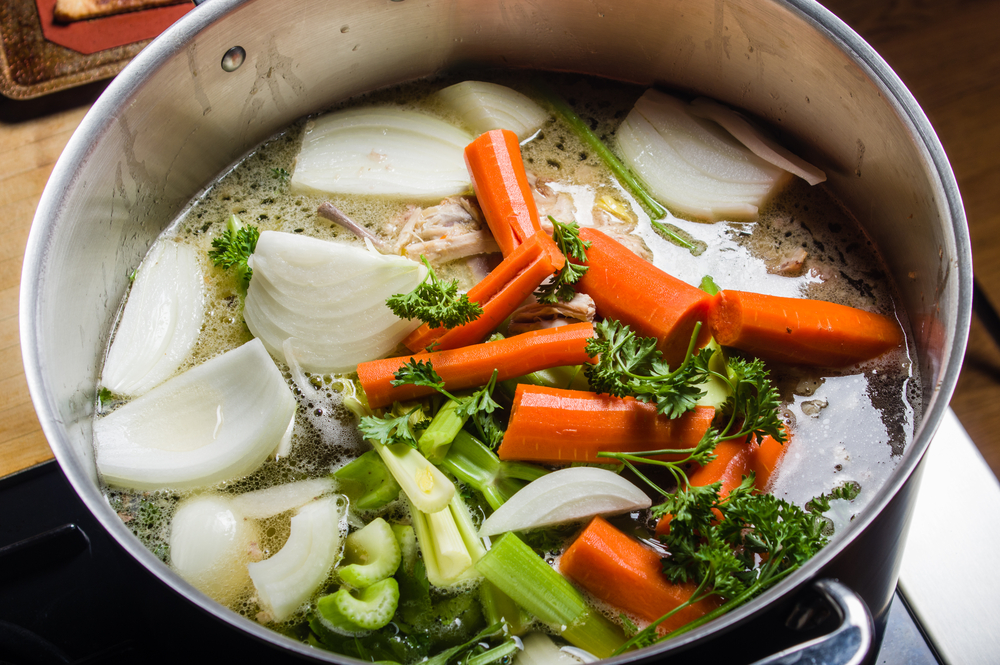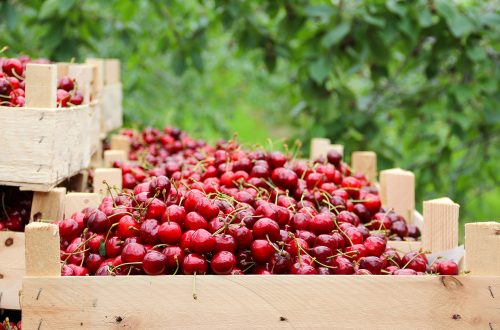
Ah, Soup – that Familiar Winter Farm Scene
From your email, please click on the title to view the photos and comment online. On the Website, you can read past blogs, search for recipes, and browse.
What is it about soup? Soup is a ubiquitous dish around the world. Soups have been around since the Stone Age, made by putting heated stones into a container of water together with scraps of meat, roots, leaves, and so on. The word itself is almost universal: Latin suppa; French soupe; German suppe; Italian zuppa; Danish suppe. Centuries ago, they all referred to bread soaked in broth. Soup is so ubiquitous that it has entered our language in fascinating ways. Think of alphabet soup; duck soup; from soup to nuts; in the soup; pea-soup fog; stone soup; primordial soup; and soup kitchen. During the Irish Famine, Souperism was the practice of Bible societies to feed the hungry in exchange for religious instruction. These days, “tag soup” means poorly coded HTML.
Given its intrinsic place in food traditions, one thing that’s been on my mind is why Americans seem to be rather abysmal when it comes to their own creativity in the soup category these days. After all, this is prime soup season. When I was growing up, the only homemade soups in my house were chicken and egg noodles, my favorite meal, as well as a ham and bean soup with dumplings, which I also loved. James Beard pointed out in his American Cookery that when this country was first settled, regional soups were the prime meal in many areas. New England’s chowders and stews were cloned as settlers from the region moved west. Pennsylvania and Maryland had their terrapin stews. In Charleston, Beard wrote, the Huguenot influence produced she-crab soup. Elsewhere in the South, gumbos flourished. And, of course, the Southwest had its chili.
What happened to homemade soups?
Now home cooks are less likely to make these soups from scratch. One reason for the modern lack of soup creativity is kitchen technology. A couple of centuries ago, homes lacked electricity and refrigeration. Cooks usually had a large pot steeping on the hearth. Later in the 19th century, the wood-burning stove improved cooking convenience, but it still had a potboiler. Into that pot went the bones and some root vegetables to create a good broth. Nineteenth-century cookbook authors observed that soup made from raw meat was better than using leftovers, though they acknowledge that large families couldn’t always afford fresh meat for the purpose.
When it came time to fix a meal, the cook could remove the bones, strain the broth, and add back some fresh vegetables, game, or cuts of preserved or smoked meats and vegetables. Sometimes beans and grain were also added to add flavor and body. The 1950-ish Farm Journal Country Cookbook begins the soup chapter talking about a big kettle of soup bubbling on the range as a “familiar winter farm scene.” This was about the time I saw those bubbling pots fade away as canned condensed soups gained favor. Fewer farm cooks were desirous of spending a day boiling bones and meat, skimming off the fat, and clarifying the stock for beef or chicken broth to use right away or freeze. It was just easier to buy it condensed in the can.
Still, I longed for the days when my mother would send me out to find a fat old hen, pluck the feathers, and stew the chicken for hours as she made thick, wide egg noodles. When the final chicken and noodles was ready, I would pile my small square plate as high as possible. And I did the same when she made ham and dumpling soup from a ham bone.
The satisfaction of making soup from scratch
Today, some 60-plus years later, I still like making soups from scratch. When possible, I use my own chicken broth made from the carcass of a roasted bird. And on a recent visit to my mother in Illinois, I made her a bowl of ham, bean, and dumpling soup. Danish cookbook author Trine Hahnemann says soup is “hygge” or comfort food, and she cooks a lot of it during the colder months – whether a classic fish soup, potato soup with toasted rye flakes, or spicy pumpkin soup with croutons.
During this soup season, I think I’ll make some of the world’s favorite soups. Turns out that chicken noodle comes in at #11. Number 1 is that popular Vietnamese breakfast food pho. Unsurprisingly, Japanese ramen soup is #2. Borcht is #3, and wonton noodle soup is #4. I might first try #5, caldo verde from Portugal, or maybe #6, cullen skink from Scotland.
I probably won’t try my hand at gazpacho like the Spanish agricultural laborers who pounded the ingredients – tomatoes, garlic, and bell peppers – in a dornillo, a large wooden mortar and pestle, before dressing them with vinegar and olive oil. But I might attempt a fruit soup, say, the Norwegian version, which would be good for breakfast. Maybe even fasolada, a Greek bean soup or fanseca, a cod soup from Ecuador. I might even try egusi, a traditional Nigerian soup made with vegetables, meat, fish, and balls of ground melon seed, often eaten with fufu. In addition to some new taste sensations, I might even find a good one to add to my repertoire. What about you? Do you have a secret family soup recipe to share?
Please click on the headline to view the blog on the website. You can log in and comment at the end of the blog to share your thoughts and start a discussion, or suggest a topic for Farmboy in the Kitchen.
If you’d like to share the blog, click on the Facebook icon or one of the others. Thanks!




